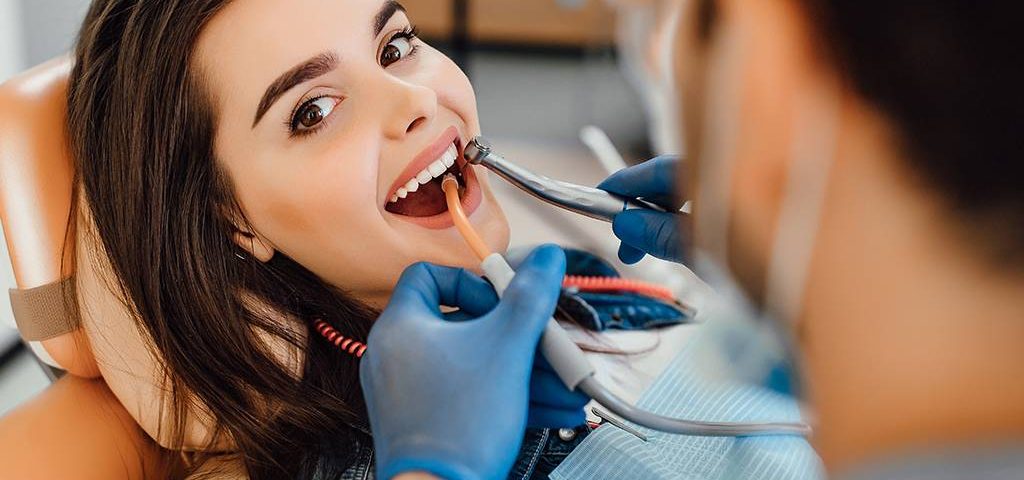
Today, There is a Bright Future for Dental Equipment
February 22, 2025
Dentist’s Hand Strength Tools
March 2, 2025Introduction
Similar to other sectors of medical science, the dental industry, too, has been going through a revolution-the digital revolution. Digital tools are now in a position to redefine the way dental practice takes place-from diagnosis to planning and management of patients of all forms and sorts-ways unimaginable just a couple of decades ago. From services like digital radiography to using sophisticated software for patient records or 3D printing; all these tools have made their work easier and rendered patients enhanced outcomes with a lot more accuracy and overall care.
In this article, therefore, we will analyze how significant digital tools are in modernizing dental practice and improving both the quality of care and efficiency of treatment. Discussing how those tools constitute different types of digital currently into dentistry, one will bring a million changed ways dental professionals work in Peru and delivery systems.
Integration of Digital Technologies in Dentistry
Previously, a lot of time and effort was wasted performing many manual processes in the provision of dental care. Nowadays, however, digital tools are fast becoming an integral part of everyday practices in dentistry with a host of benefits brought to the table with regards to speed, accuracy, and convenience of use. This could range from using digital tools to improve a practice’s diagnostic capabilities to enhancing patient treatment and care management.
Digital imaging is one of the areas most influenced by digital tools. Now in widespread use in dental practices are digital X-rays and intraoral cameras: they have clearer images and use much less radiation than earlier analog images. They can usually catch more problems such as cavities, gum disease, and even oral cancer earlier because of their digital application.
Replacing paper systems with modern, digital patient records supports the secure storing and management of patients’ information. This way, one can quickly access an individual’s medical history, treatment plan, as well as diagnosis data. Ultimately, such a scenario will increase the efficiency of a dental practice through the reduction of errors while, at the same time, increasing the quality of patient care management continuity.
How the Digital Tools Streamlined the Working of Diagnostics and Treatment planning
1. Digital X-ray and Intraoral Imaging
Digital X-rays not only provide a higher resolution and lower radiation dose, but they truly are different dimensions of teeth images and have totally cut down on time for diagnosing and planning treatment. They provide the dentist an immediate report to carry forward the treatment and speed up his processing. Furthermore, all these digital images are easily stored, accessed, and shared with other healthcare providers, thus enabling better collaboration in patient care.
Intraoral cameras- another invaluable diagnosis tool because they allow dentists to take high-definition, real-time images of the inside of a patient’s mouth. The brilliance helps dentists find a decayed tooth, cracks, and infections at an early stage. In most situations, these problems could have been diagnosed only with the naked eye. They serve as a visual means of showing patients their condition, thereby involving them more in their own care.
Three-dimensional imaging and CAD/CAM technologies
Cone-beam computed tomography (CBCT), one of the three-dimensional imaging techniques, is capable of providing highly magnified volumetric images of a patient’s mouth and jaws. This imaging modality is very useful for complex treatment planning involving insertions, extractions, orthodontic treatment, and many others. It allows the dentist to have a clearer view of the bone structure and adjacent small tissues.
Using computer-aided design (CAD) and computer-aided manufacturing (CAM) has revolutionized the manufacture of restorations, enabling dentists to create crowns, bridges, veneers, and dentures right at their own clinics using specialized CAD software and 3D printers. It will probably lead to a lesser time to wait before the restoration is finally completed and would also minimize the intervals for multiple visits, thereby enhancing patient satisfaction and efficiency.
Artificial Intelligence and Machine Learning
AI has penetrated seriously into the diagnostic devices of the dental profession. AI software can extract, analyze, and interpret data from X-ray films and other imaging modalities about any anomaly-from achieving improved sensitivity and specificity compared to the human eye itself. It can finally help dentists in diagnosing several cavities, fractures, and other crucial early features of oral cancer, allowing patients to contribute important behavioral changes at an early stage and provide more effective therapies.
In addition, machine learning algorithms have been introduced in predicting upcoming dental care problems, e.g., probability of periodontal disease in patients depending on their previous dental history as well as their lifestyle-related factors. AI-powered tools can even help in personal treatment planning by creating individualized treatment plans according to each patient’s needs and requirements.
The experience of Patients and delivery of care is much improving
1. Patient Management System
Streamlining administration for dental practices with digital tools has eased appointment management, patient billing, and record keeping for dentists and staff. Electronic health records (EHR) or practice management software help maintain detailed, accurate patient histories and treatment plans. Such information is then available on site, ready and up to date.
They also help to enhance patient communication through automated reminders of appointments, follow-up care, and prevention treatments. Patients are kept much more likely to follow-through with visits and fulfilling treatment protocols that greatly improve outcomes.
2 . Tele-dentistry
We are introducing on board tele-dentistry as one of the ever-widening digitalization in the practice of dentistry. It enables clients to receive consultations and follow-up with their dentists without the need for physically going to the office. Thus secure video calls, chats, and other online means of interaction are used. It is said that the majority of the patients needing dental care are those who live far from a dental clinic or may not easily commute due to having mobility limitations, and through tele-dentistry can easily be able to get treatment. Also, it allows the dentist to keep track of the progress of patients’ improvement and provides recommendations, which are all done without a patient coming for a visit.
Tele-dentistry is especially suitable for specific services such as follow-ups after surgery, routine checkups, and minor dental consultations regarding other issues. By enhancing access availability to dental services, tele-dentistry can improve the level of patient engagement and satisfaction.
3. Improved Patient Education
Digital tools are one of the significant instruments that help patients in improving their oral wellness education. Most of these facilities are now using devices such as a digital screen, animations, and some interactive applications, where they can explain and show procedures, diseases, and treatment options. Through visualizing what has now happened, the patients will better understand the suggested treatment, lessens the amount of anxiety, and improves compliance.
Advantages of Digital Tools for Dentists
Signing up with digital tools in dentistry enhancement actually pays off for the professionals. These tools boost workflow process efficiency, minimize errors, and allow diagnoses to be even more accurate. Digital tools automate most of the rote tasks and thus allow dental staff to devote more time to patient care than paperwork processing.
These handy processes bring environmental benefits to dental practice by reducing paper records and models. In addition to that, many of the digital tools such as, for example, the intraoral scanner, the other advantages of a 3D printer, are also reducing the number of materials necessary for treatment, so lowering costs associated with waste.
modernizing dental practices through the x-forceps and improving outcomes
x-forceps are perhaps the most exciting heralds of a digital revolution in the practice of dentistry’s. Equipped with advanced technology- pressure sensors, built-in cameras- the users of X-Forceps can monitor their actions while performing processes, according to the dentists who use it. This allows them to perform the procedures as accurately and controlled as possible, thus reducing the chances of errors such as excessive pressure during exodontias’, overall improvements in treatment outcomes. Besides resulting in more accurate dental surgeries, X-Forceps will lessen the physical strain on the dentist for a more efficient and comfortable practice. However, slowly but surely, digital tools like the X-forceps are becoming mainstream in dental care for better procedure quality and patient satisfaction.
Conclusion
Digitalization tools are ever more becoming a powerful vehicle for the modernization of dental practice-the driving force for increased diagnostic accuracy, treatment planning, and patient care. From digital X-ray and 3D imaging to AI-powered diagnostics and tele-dentistry, there is a huge leap toward more efficient, precise, and patient-centered practice. So, with these inventions and developments in dental technology, digital tools will most likely shape tomorrow’s dentistry, making it better for patients and practitioners alike.

